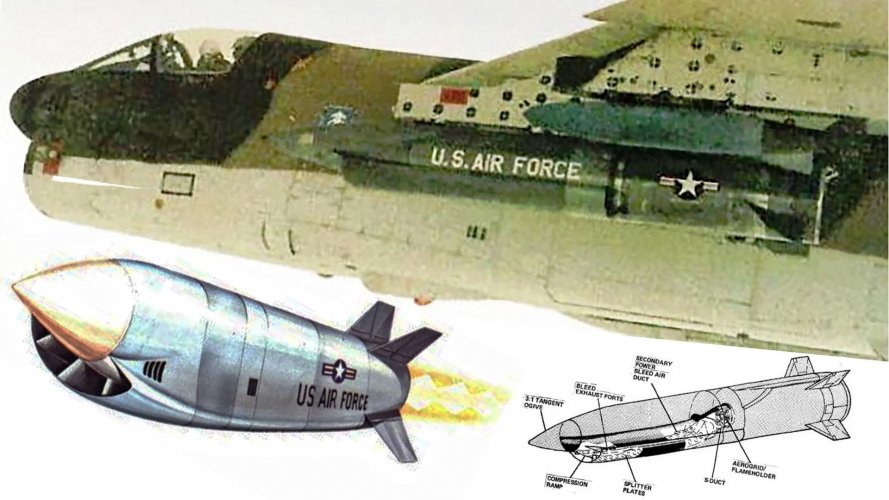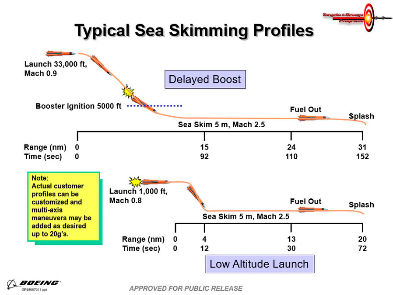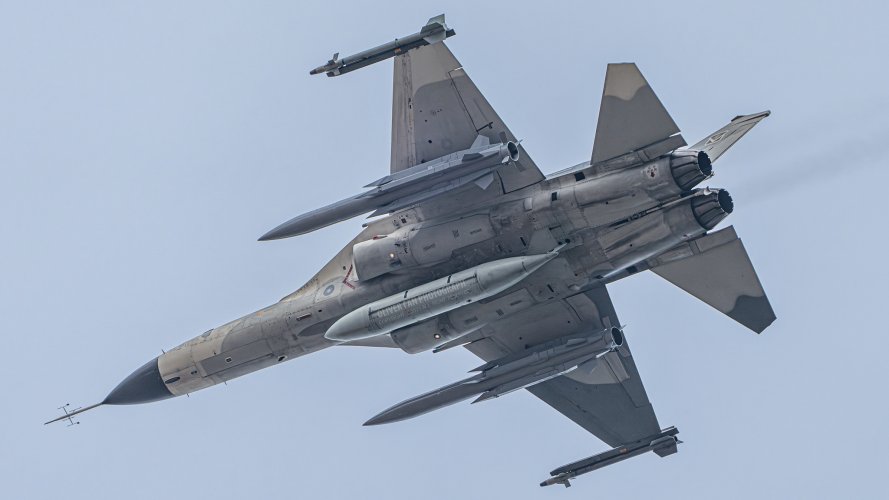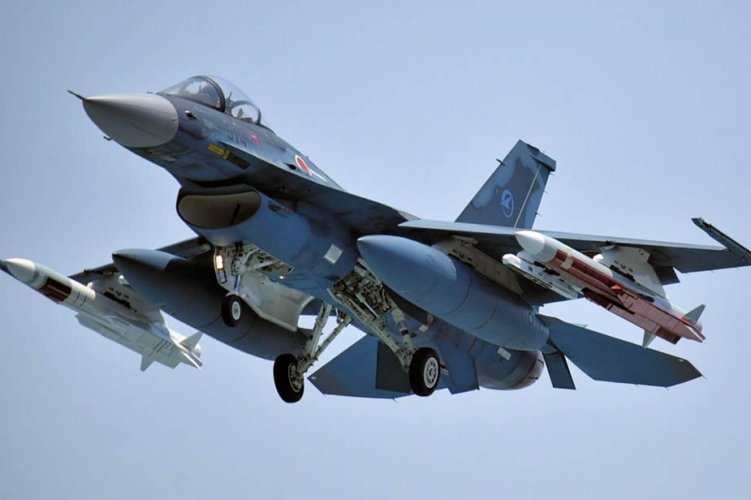Forest Green
ACCESS: Above Top Secret
- Joined
- 11 June 2019
- Messages
- 9,362
- Reaction score
- 17,045

Kratos Has A Hypersonic Drone In The Works
Kratos says low cost is a central focus of its newly disclosed high-speed drone program.

About five-ten years ago wasn't Rolls-Royce working on a turbojet for a high supersonic/low hypersonic missile which I think was designated the YJ-102 (I don't know if I'm remembering correctly)?
Yes, for RATTLRS.

Details on the Indiana Factory:
Kratos Has A Hypersonic Drone In The Works
Kratos says low cost is a central focus of its newly disclosed high-speed drone program.www.twz.com
A San Diego-based military contractor plans to spend $50 million to construct a 68,000-square-foot facility at Crane to test and improve hypersonic weapons.
The contractor, Kratos Defense & Security Solutions, announced the plans Tuesday at Westgate@Crane Technology Park in Odon, Indiana, about 35 miles southwest of Bloomington.
Company executives said they expect to hire more than 100 people, from machinists to engineers, who will earn an average of $80,000 a year.
Kratos Senior Vice President Michael Johns said the company is working on partnerships with academic institutions and already has signed research agreements with Notre Dame, Purdue and IU.

UK government press release.UK, U.S. Scientists Conduct Joint Hypersonic Engine Trials | Aviation Week Network
UK and U.S. scientists have completed a series of trials in support of the UK’s domestic development of a hypersonic cruise missile demonstrator.aviationweek.com


So that leaves what? HACM as the only potential air launched hypersonic missile with future anti-ship capability? Im okay with that as long as the USAF dosent also cancel it out of nowhere..USN has killed HALO due to budget constraints.

U.S. Navy Cancels Critical HALO Hypersonic Missile Citing Cost Concerns - Naval News
The Hypersonic Air Launched Offensive (HALO) missile in development for the U.S. Navy's high priority OASuW Increment 2 program has been cancelledwww.navalnews.com
Possible USN could fall back to a more affordable but less capable Hypersonic concept like LM's MAKO, or pursue further SiAW/AARGM-ER developments.So that leaves what? HACM as the only potential air launched hypersonic missile with future anti-ship capability? Im okay with that as long as the USAF dosent also cancel it out of nowhere..
I hope so, cause relying on subsonic cruise missiles alone is absolutely not enough to make a dent against the PLAN. There should be a high speed AShM to complement what we have.Possible USN could fall back to a more affordable but less capable Hypersonic concept like LM's MAKO, or pursue further SiAW/AARGM-ER developments.
There should be a high speed AShM to complement what we have.
Possible USN could fall back to a more affordable but less capable Hypersonic concept like LM's MAKO, or pursue further SiAW/AARGM-ER developments.
I hope so, cause relying on subsonic cruise missiles alone is absolutely not enough to make a dent against the PLAN. There should be a high speed AShM to complement what we have.
Perhaps the US could licence-produce that supersonic AShM that Taiwan has put into service (I can't recall its' name).
More missiles means more launch platforms needed. I think an exquisite AShM missile, that'd render a significant chunk of the PLAN's air defense missiles moot against it, and force the PLA to develop and deploy an exquisite air defense missile is worth it.Subsonic can work if there’s enough them and they can be carried in sufficient numbers. Something like Bullseye, Barracuda, or CMMT could be carried ten at a time and probably cost a tenth of LRaSM.
More missiles means more launch platforms needed. I think an exquisite AShM missile, that'd render a significant chunk of the PLAN's air defense missiles moot against it, and force the PLA to develop and deploy an exquisite air defense missile is worth it.
Possible USN could fall back to a more affordable but less capable Hypersonic concept like LM's MAKO, or pursue further SiAW/AARGM-ER developments.
Let me guess, in about 15-20 years, they gonna do testing the same thing against, then cancel it again. PatheticUSN has killed HALO due to budget constraints.

U.S. Navy Cancels Critical HALO Hypersonic Missile Citing Cost Concerns - Naval News
The Hypersonic Air Launched Offensive (HALO) missile in development for the U.S. Navy's high priority OASuW Increment 2 program has been cancelledwww.navalnews.com
Oh you just have to waitas long as the USAF dosent also cancel it out of nowhere..
Navy said they are going to rely on LRASM for anti-ship after cancelling HALO with software and hardware improvements to targeting capability. No hypersonic for the Navy.
Of course.USN has killed HALO due to budget constraints.

U.S. Navy Cancels Critical HALO Hypersonic Missile Citing Cost Concerns - Naval News
The Hypersonic Air Launched Offensive (HALO) missile in development for the U.S. Navy's high priority OASuW Increment 2 program has been cancelledwww.navalnews.com
Yep and these threats force us to develop/deploy multiple different interceptors optimized for each of these threats. Hence developments like GPI and potentially PAC-3 on USN ships for ballistic/hypersonic missile defense. Meanwhile our adversaries just need something to deal with subsonic AShM's and call it a day..While I don't doubt the capability of the LRASM, isn't it a bit foolish of the USN to bet everything on one horse?
Imo, which is admittedly completely unqualified, perhaps a Hi/Lo mix with regards to Hyper/Supersonic AShMs and Subsonic AShMs would be the most solid option.
When I look towards countries like China and Russia, both having developed their anti ship munitions with the idea of engaging potent missile defenses in mind, I see a wide array of subsonic, supersonic and hypersonic missiles, including ballistic missiles.
So I wonder why the USN seems rather content with keeping a single air launched AShM relegated to said role.
Possible USN could fall back to a more affordable but less capable Hypersonic concept like LM's MAKO, or pursue further SiAW/AARGM-ER developments.
It is hard to imagine even a scramjet design makes PLAN defenses completely ineffective.
Shame they killed LRASM-B. (Though it was a bit longer than ASALM.)LRASM worked as a joint program because well it was based on the JASSM. For Increment 2, the AF had no interest in HALO because it could (and intends to) put moving target strike capability onto its hypersonic weapon (s). HACM will/should have that capability and US and Australia will adopt it. Navy's elevator driven sizing requirements really forced it into a tight spot in terms of needing a completely separate program which was expensive as it is but also without any risk sharing partner to help overcome challenges like this. Probably best for Navy to focus on building up LRASM stocks and fielding ACME and MACE to bring up volume. All three should be P-8 compatible as well..
DOD has done analysis and quite a lot of work on this in terms of effectiveness of high speed weapons against threats. This is why these efforts and programs existed in the first place. While having loads of cheaper significantly less survivable and effective subsonic missiles is a key investment area and much needed those alone won't get you where you need to be. The higher end stuff needs to exist in enough quantities as well. In fact it is the effectiveness of the middle (Harpoon and perhaps even JSM) that is questionable..

HALO was basically AL LRASM-B with a more updated (relevant to the late 2020's / 2030s) requirement from the Navy. It was a Navy only program because the Navy couldn't carry the AF's HACM and the AF, having HACM, did not need another high speed air breathing missile.Shame they killed LRASM-B. (Though it was a bit longer than ASALM.)
DOD has done analysis and quite a lot of work on this in terms of effectiveness of high speed weapons against threats. This is why these efforts and programs existed in the first place. While having loads of cheaper significantly less survivable and effective subsonic missiles is a key investment area and much needed those alone won't get you where you need to be. The higher end stuff needs to exist in enough quantities as well. In fact it is the effectiveness of the middle (Harpoon and perhaps even JSM) that is questionable..
That is very likely the DOD thought process on the whole hypersonic deal.
Very interesting. Should result in the cancellation of LRASM as well since you can buy several Baracuda 500s for each LRASM. At least cancel future LRASM and JASSM increments beyond what’s already there. Same for HACM, LRSO and other such weapons. NSM and JSM with their multi million dollar price tags look dead too.I have no doubt that the ISN wants a hypersonic weapon, were money not an object. My guess is that someone looked at the high technical risk of the project and probably a >$1 billion development effort, before production even began, and just said “how many barracuda 500s can we get for a billion?”…and the answer was several thousand, and that was that.
Very interesting. Should result in the cancellation of LRASM as well since you can buy several Baracuda 500s for each LRASM. At least cancel future LRASM and JASSM increments beyond what’s already there. Same for HACM, LRSO and other such weapons. NSM and JSM with their multi million dollar price tags look dead too.
I don’t think only new missile can fly at low altitude, Harpoon was able to fly at altitude 1.5-6 meters above sea surface, Exocet were able to fly just 1 meter above the sea. Even supersonic cruise missile such as KH-31 can fly as low as 5 meters above sea surface.One thing I seeing people forgot bout the newer ASHMs like the TLAM V, LRASN, and NSM...
is that they are Stealth designs that fly extremely low.
Talking sub 100 foot here.
Unless you have AWACs types up, you are not even able to fucking see that till its 50 miles out.
Without stealth mind you, the radar Horizon max out at 50 60 miles for ships mask sets, for the big phase arrays like tge SPY1 that down to 30 40 since they are lower.
The Stealth likely makes it a out right PITA to detect up to 10 miles away. Inside that it slowly becames easier til its visible in the 5 miles band where ThermoOptics can detect and track it.
That cuts out most of the weapons can bring to bear and at the Tomahawks speed of 550 mph?
You got less then 30 seconds to kill it from a 5 mile detection, 1 minute from 10 and 2 for 20.



That's a significant amount of time. Active Protection Systems on tanks are capable of intercepting RPGs and, in some cases, even sabot rounds—despite having only fractions of a second to respond. In my view, the primary challenge in intercepting supersonic or even hypersonic threats isn't necessarily the reaction time. Rather, it's the reduced effectiveness of traditional warheads at such high closure rates.When targets are traveling at speeds of Mach 5 to 8, fragmentation warheads struggle to effectively engage them, as the extreme relative velocity means the fragments often cannot reach the target in time , the two simply pass each other before the fragments can impart significant energy or damage.That isnt a whole lot of time even with computers.
I would disagree with this, if anything, the experience in Ukraine shown us that supersonic weapons are much more dangerous to air defense. From Russia side, the majority of their S-400, S-300V4 lost were due to ATACMS, a Mach 3 missiles, and not due to something like Stormshadow, a stealth missile.but the experience in Ukraine seems to indicate very high speed weapons are much less capable against modern defenses when the target and launch point are extremely close together - and in the case of a ship, they are colocated.

Interesting. What's the source of these figures? Thank you in advance.I would disagree with this, if anything, the experience in Ukraine shown us that supersonic weapons are much more dangerous to air defense. From Russia side, the majority of their S-400, S-300V4 lost were due to ATACMS, a Mach 3 missiles, and not due to something like Stormshadow, a stealth missile.
From Ukraine side, they also published the interception range against different kind of missile, the success rate agaisnt subsonic cruise missile were significantly higher than the success rate against supersonic ballistic missiles
View attachment 766440
Here you goInteresting. What's the source of these figures? Thank you in advance.

